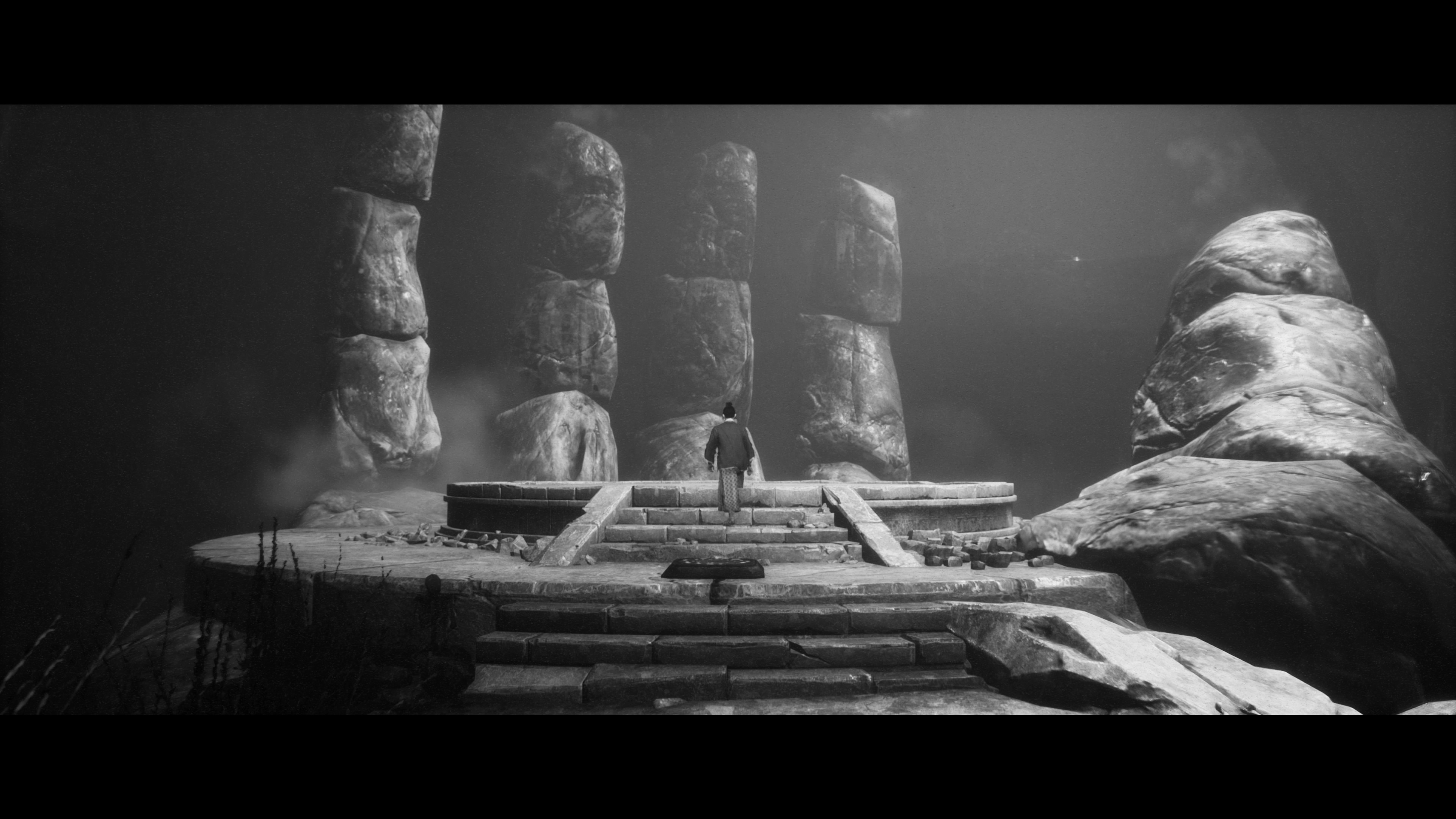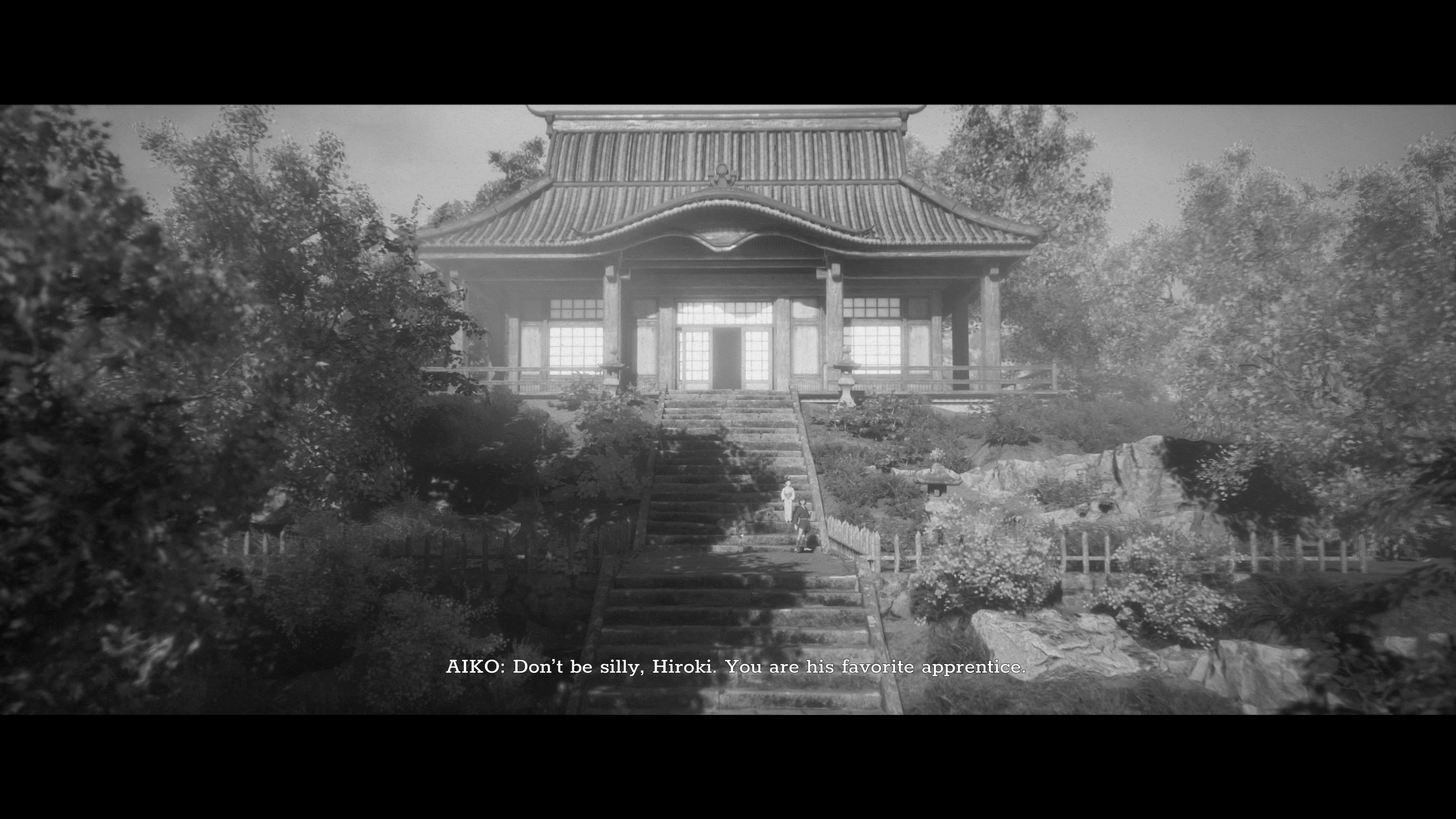GamesRadar+ Verdict
In its visuals and audio, Trek to Yomi nails its brief to create an Akira Kurosawa-inspired samurai adventure. Its interactive elements, however, along with its story, are all too ordinary and rarely combine to heighten the atmosphere or create suspense. Worth a try for the sightseeing perhaps, but don’t expect it to cut deep.
Pros
- +
Frequently stunning scenery and cinematic camera work
- +
A satisfying array of combat options
Cons
- -
Combat is overly repetitive and lacks tension
- -
The locations are underused and lack lasting impact
- -
The story falls a little flat
Why you can trust GamesRadar+
Early in the second level of Trek to Yomi, our samurai hero Hiroki arrives at a deep ravine bridged by a fallen tree. A waterfall cascades in the background. A light breeze pushes through the grass and leaves. On the opposite bank stands a pair of murderous bandits, and as Hiroki steps onto the thick, cracked trunk he knows he must fight to the death. The first bandit rushes forward and swings his blade. Hiroki blocks and responds with a lethal slash. The second repeats his friend’s mistake. Same result. And, well, that’s it. Hardly worth the build-up, was it?
Unfortunately, a lot of scenes in Trek to Yomi follow a similar arc, from brief anticipation to anti-climax. Some in fact are near-identical – in the same level, a series of bridge-based encounters repeat the setup. There’s even another fallen tree. Sure, each is staged with cinematic splendor, but the side-scrolling hack and slash action that squats behind the presentation doesn’t provide enough support. The game’s real estate, decked out in succulent detail, feels squandered. As you’re propelled through a linear adventure from rural Edo Japan to Yomi, the land of the dead, locations make a bold first impression then scroll into oblivion.
The art of war

Still, there’s no denying the quality of those first impressions. The obvious influence on Trek to Yomi is Akira Kurosawa’s classic samurai films, such as Seven Samurai and Yojimbo, and not merely in its use of a black and white palette, or its skilled and disciplined hero. As with Kurosawa, backgrounds often boil with elemental power, from that waterfall to a sudden downpour or a raging fire, and equally with human energy, as villagers flee for their lives and bandits ransack their homes.
The lively staging is coupled with some exquisite shot composition. Scenes switch back and forth between the single-plane side-on view where combat takes place and 3D free-roaming where the camera is let off the leash a little. True, it’s never as spritely as a Kurosawa camera, with its tracking shots and jump cuts, but finds unexpected angles that ask you to soak in the scene of a destroyed village, the tears of lamenting inhabitants, and later the scattered masonry and wild whirlwinds of Yomi.

Indeed, even the flatter combat view has its flourishes, such as having you duel in silhouette behind paper screen doors. Or there’s the scene where a group of bandits assembled on a bridge slay a captive villager and dump him into the river as Hiroki enters from the left. In the middle of your subsequent fight with them, you might just spot the body bobbing past the camera on the current – an impactful detail that should feed your desire for revenge.
However, many details fail to add this kind of weight to the scenario or get lost amongst your efforts to progress. In the 3D sections, there are usually one or two non-critical routes to explore. Some give you the opportunity to avoid a direct encounter and cut loose some heavy logs to take out a group of foes from a safe distance, although many more lead to dead ends containing health or stamina boosts and ammo refills. But with the absence of color and skewed camera angles you tend to end up spending your time testing the edges of each scene, seeking out hidden exits and collectibles, until the rain, fire, and screams of torment become background noise.
Chopaholic

Combat, meanwhile, repeats itself too much, until you know what to expect whenever the camera snaps your movement to a left-right plane. Bandits leap from their posts (some in front of you, some behind) and politely attack one at a time. Remember that fight on the fallen tree, where Hiroki simply blocked and responded with a killer blow? Well, a surprisingly large percentage of encounters in the opening stages can be navigated that way. Hold down block, wait for your opponent to strike your guard, then casually chop them down.
Weekly digests, tales from the communities you love, and more
Yes, it makes Hiroki look like a no-nonsense samurai master, but when dozens of enemies queue up to get cut down with little meaningful variation it’s also a tiresome procession, with only the occasional spear- or bow-wielding bandit prompting a little more guile. Even later in the game, in the depths of Yomi, many of your antagonists are merely tougher spirit versions of those you were fighting before. Some more formidable and grotesque manifestations wouldn’t have gone amiss.
Fights do get busier and enemies more robust over time, at least, and your move set expands to compensate, adding a range of slash and stab combos and evasive maneuvers that add tactical options. And some moves are genuinely satisfying to pull off, in particular the place swap parry, where a perfectly timed block sends you spinning behind your opponent, delivering a sharp swing to their back for good measure.







Whether you actually need to perform such feats is another matter, however, and ultimately it’s all too tempting to stick to a few oddly reliable combos. The balance of later fights was thrown off radically for me once I learned a quick three-hit sequence called ‘light overhead combination’ that not only interrupts most enemy attacks but leaves them stunned and open to an instant finishing move that recharges your health. I regularly exorcised whole groups of spirits with this one move. It wouldn’t be a huge exaggeration to say that if I was writing a combat guide for Trek to Yomi, I could sum a good chunk of it up in one sentence: block and counter until you acquire the light overhead combination, then use the light overhead combination.
My point here though isn’t that the game is ‘too easy’, it’s that it falls short of its own cinematic pretensions. In that sense, Hard mode feels more appropriate, simply because enemies take and dish out more damage, and that forces you to work up a rhythm of deliberate, targeted parries and strikes. Suddenly, there’s a little tension in your face-offs, and grit in your blows. (There’s also a one-hit kill difficulty, which applies to both you and your enemies – except bosses – although I’m not convinced the controls are quite sharp enough to stop that becoming torturous.)

Yet in even Hard mode, the repetitive nature of Hiroki’s quest doesn’t quite live up to the visual feast (and powerful simmering score) that surrounds him. The recent Sifu is much more effective in this respect, for example, by staging its levels as extended movie action sequences, where each individual enemy exists for a reason and every scene is a different combat puzzle. In contrast, too many moments in Trek to Yomi don’t grip the attention, right down to some late-game ‘environmental puzzles’ that barely justify the name.
Perhaps this shallowness wouldn’t matter so much if Trek to Yomi’s story had more of a pull, but on that count too I found a lack of definition. It focuses too heavily on Hiroki and his devotion to Bushido values without introducing him as a fascinating personality in the first place. His subsequent struggle over his vows and his guilt over his tragic failure to protect his village and his love, Aiko, are simply not that captivating, and by then none of the other characters or wider context have been sufficiently developed.
This is emblematic of a work that frequently shows off its eye for a stunning vista, but only occasionally in a way that feels like it really matters. Of course, this isn’t a Kurosawa film. As Hiroki steps onto that fallen tree trunk, we can’t expect to zoom in on the sweat on his brow or the resolute expression on his face. But that’s all the more reason to conjure emotion from the clashes of katanas and spurts of blood. In that respect, as much as Trek to Yomi is an eager disciple, it hasn’t mastered the way of the warrior.
Reviewed on PS5 with code provided by the publisher.
Jon Bailes is a freelance games critic, author and social theorist. After completing a PhD in European Studies, he first wrote about games in his book Ideology and the Virtual City, and has since gone on to write features, reviews, and analysis for Edge, Washington Post, Wired, The Guardian, and many other publications. His gaming tastes were forged by old arcade games such as R-Type and classic JRPGs like Phantasy Star. These days he’s especially interested in games that tell stories in interesting ways, from Dark Souls to Celeste, or anything that offers something a little different.



